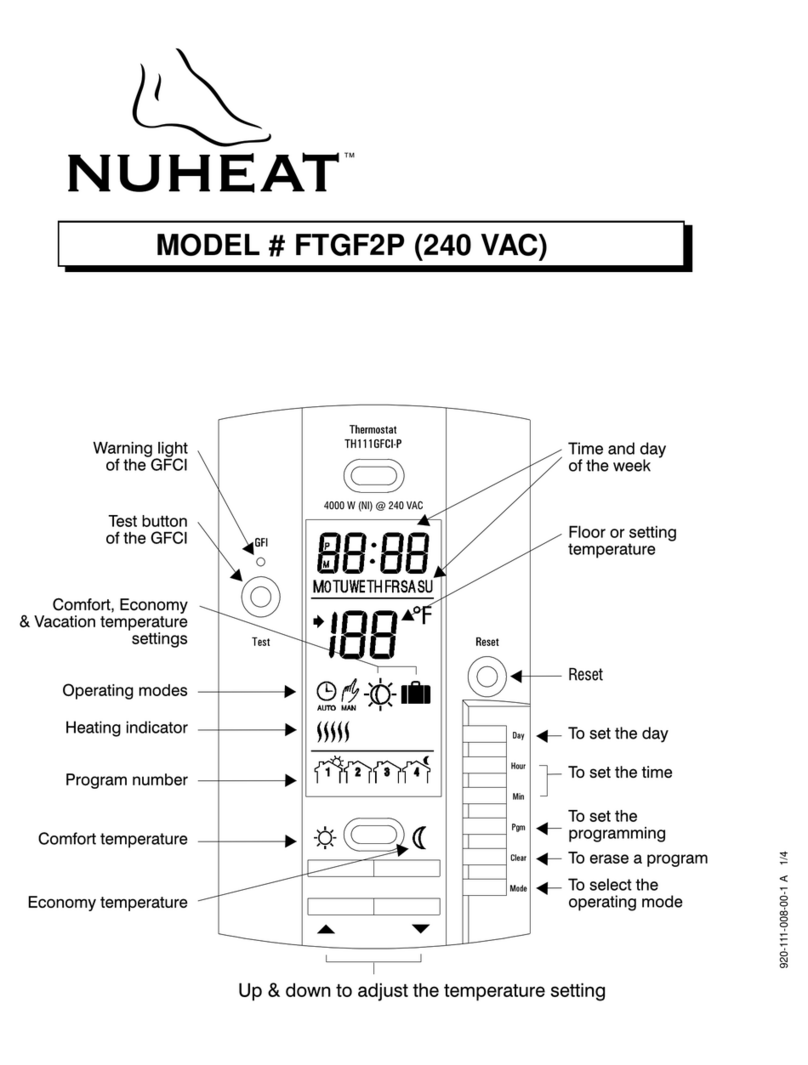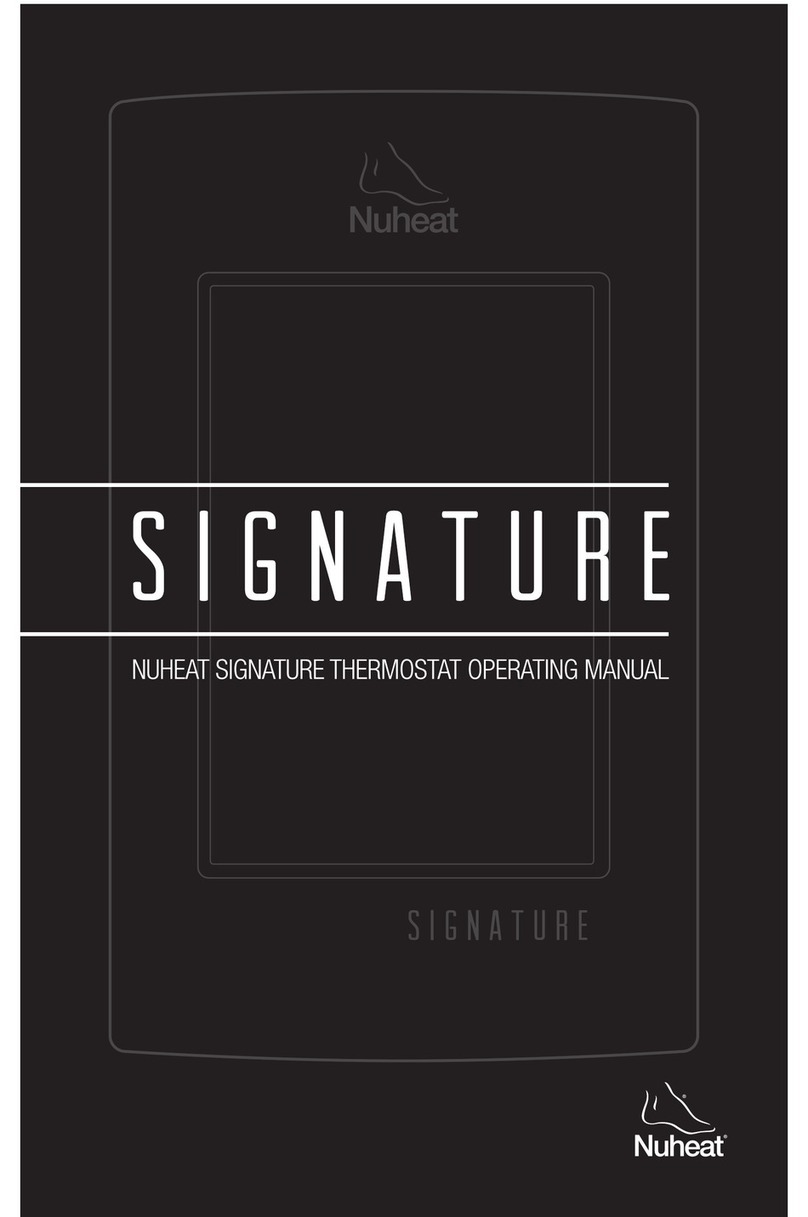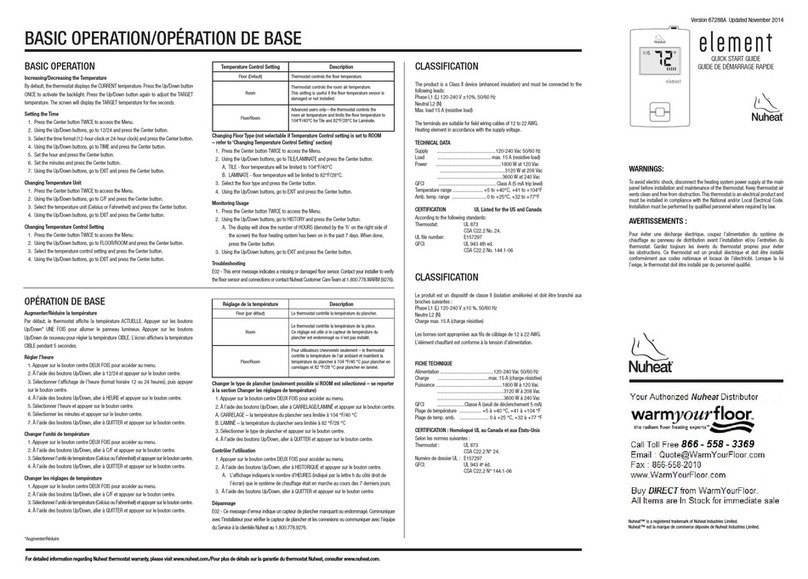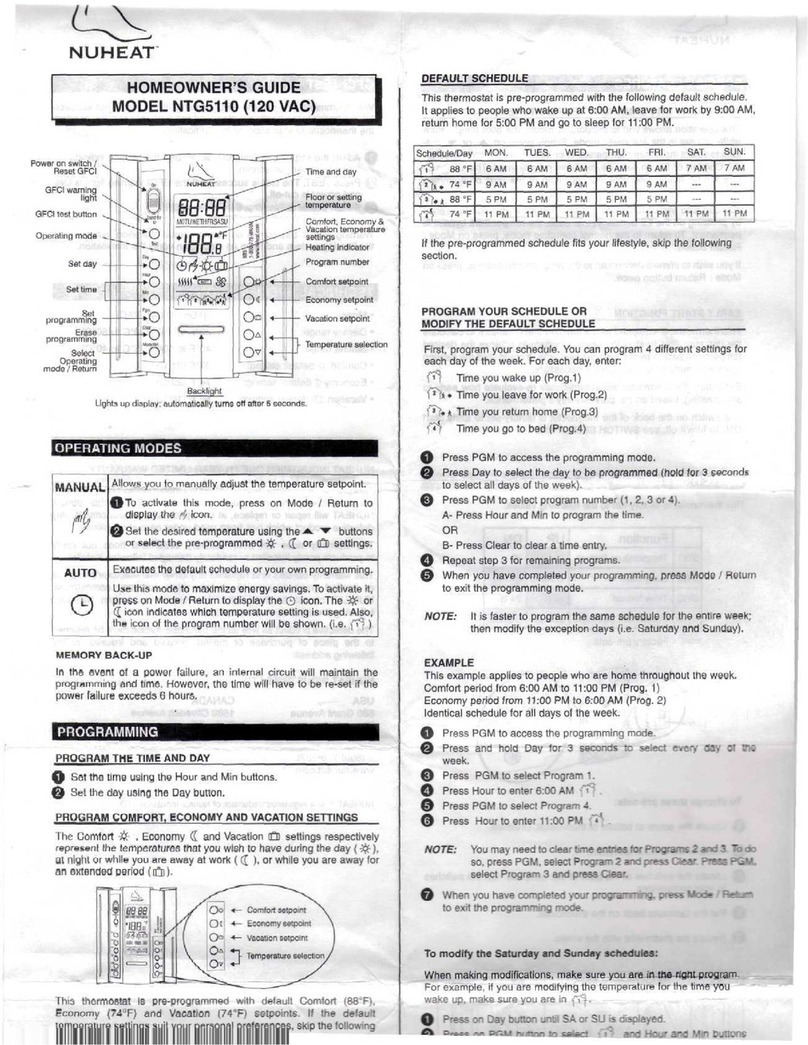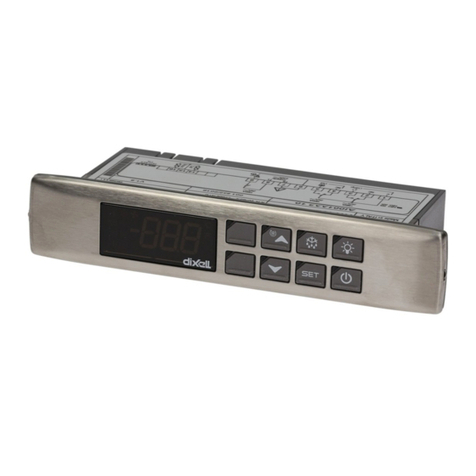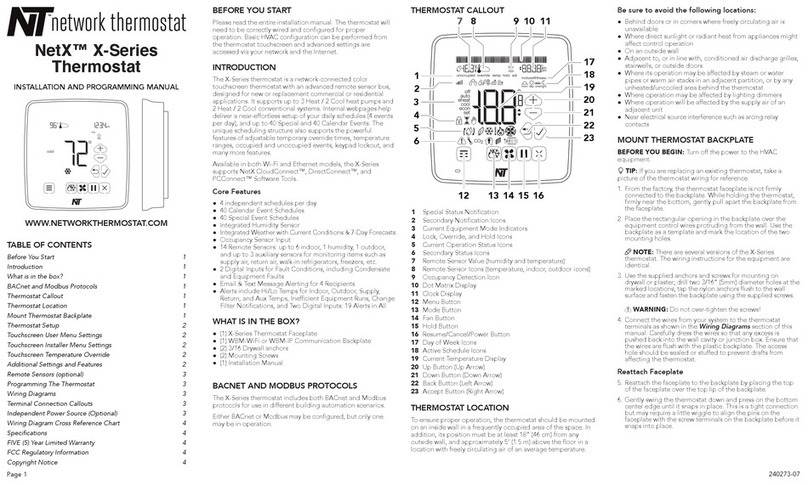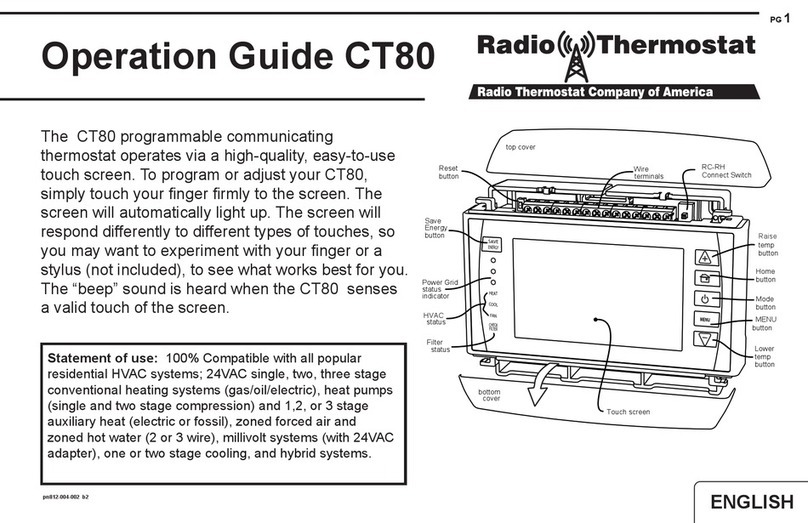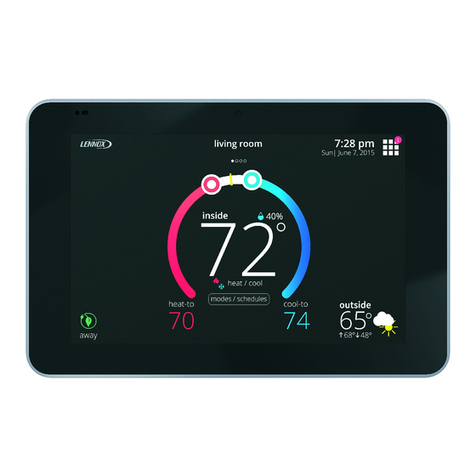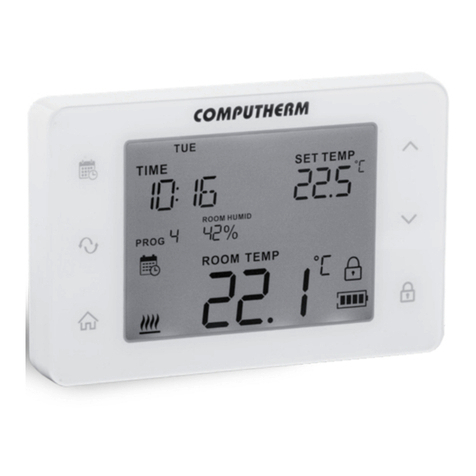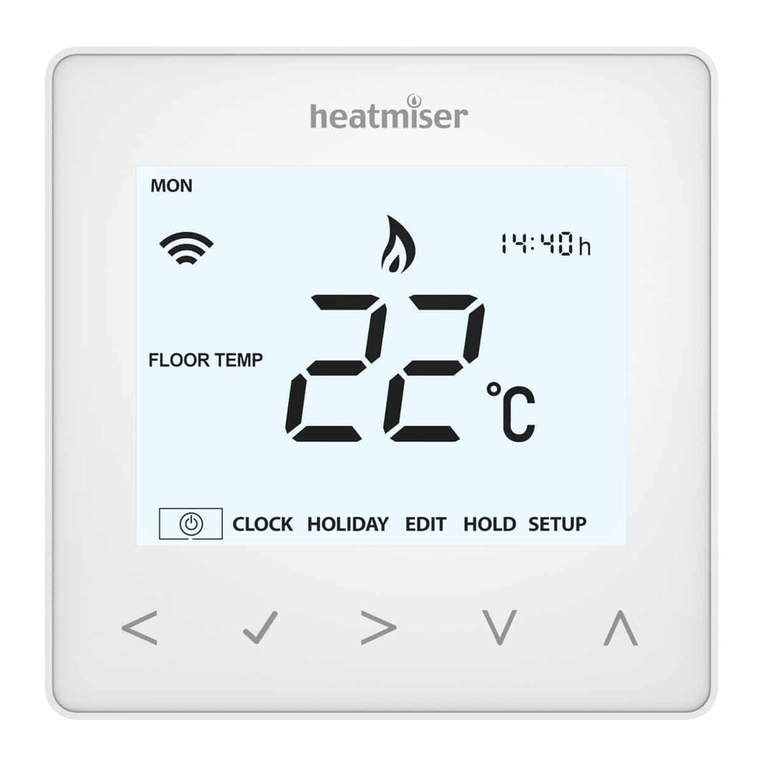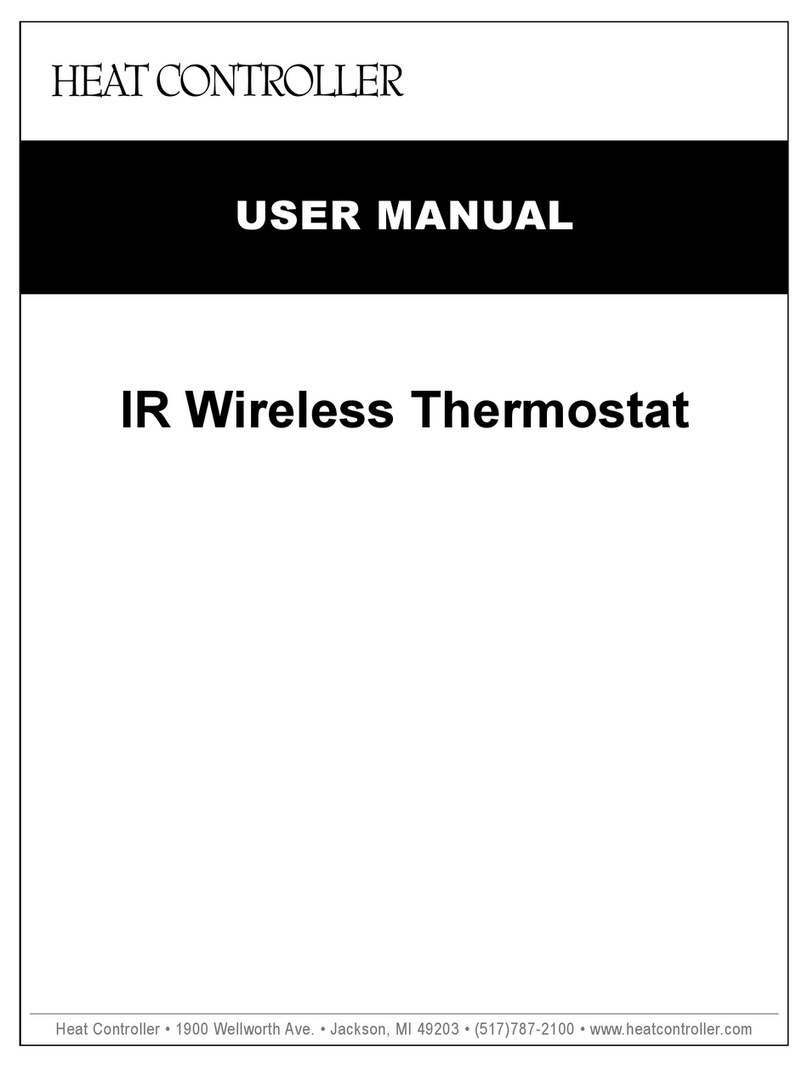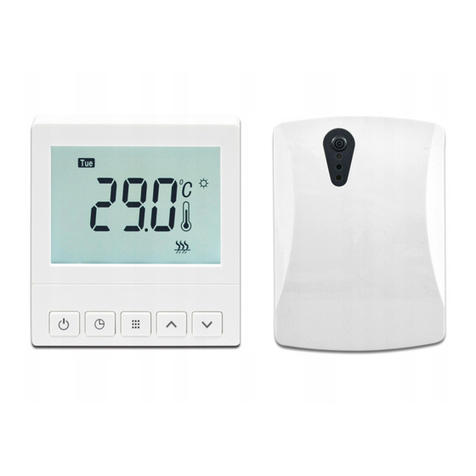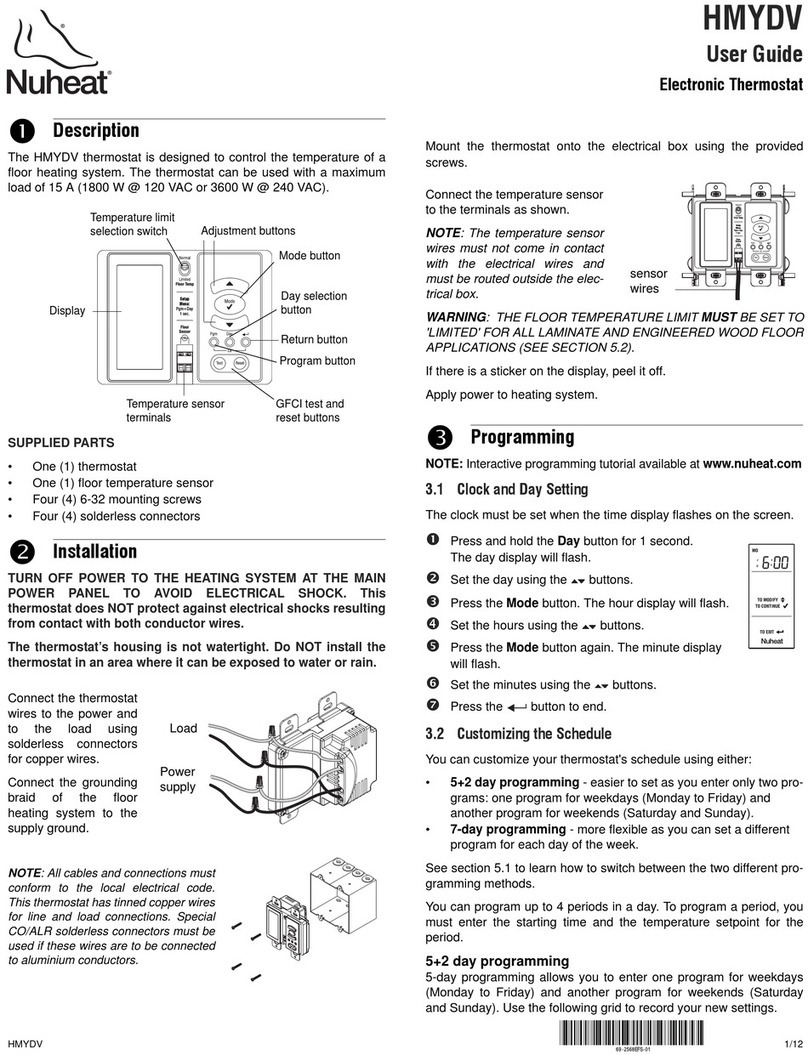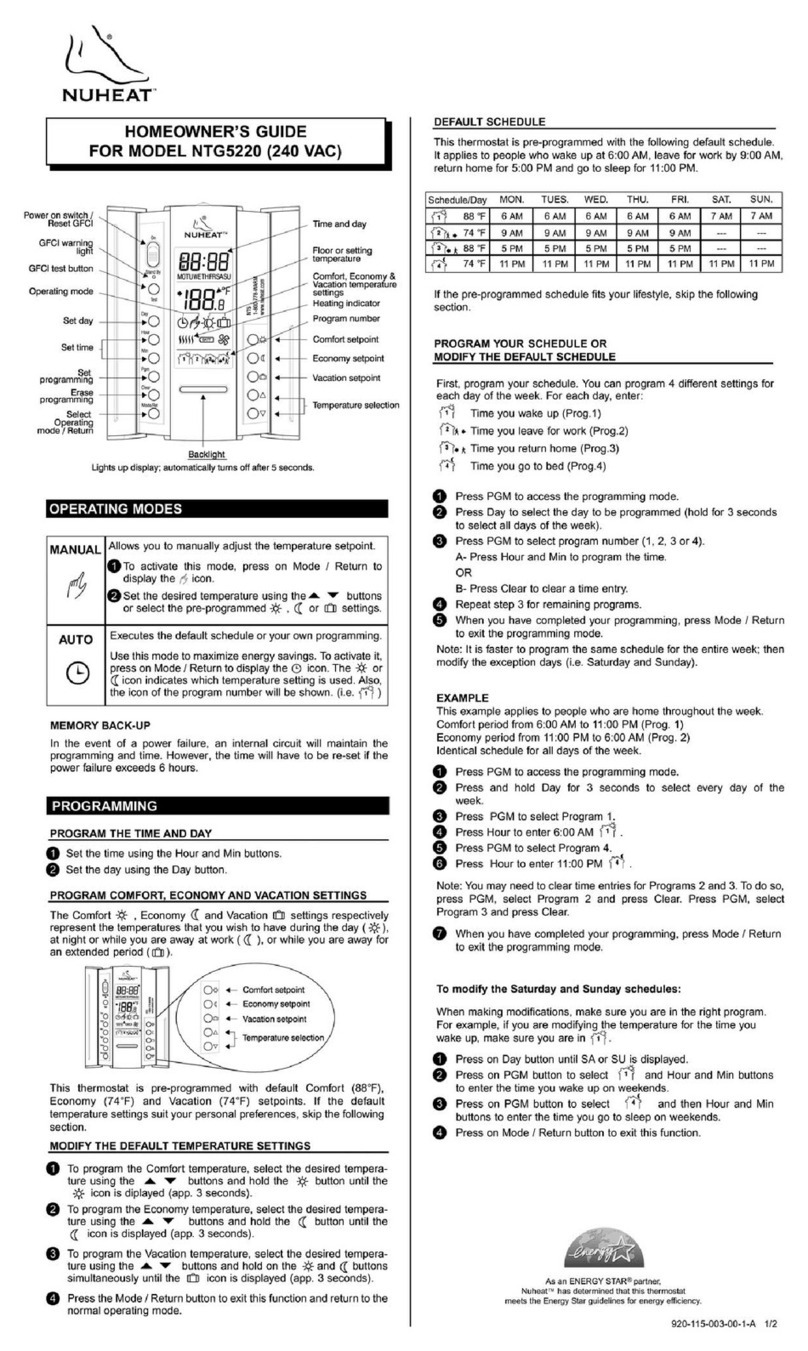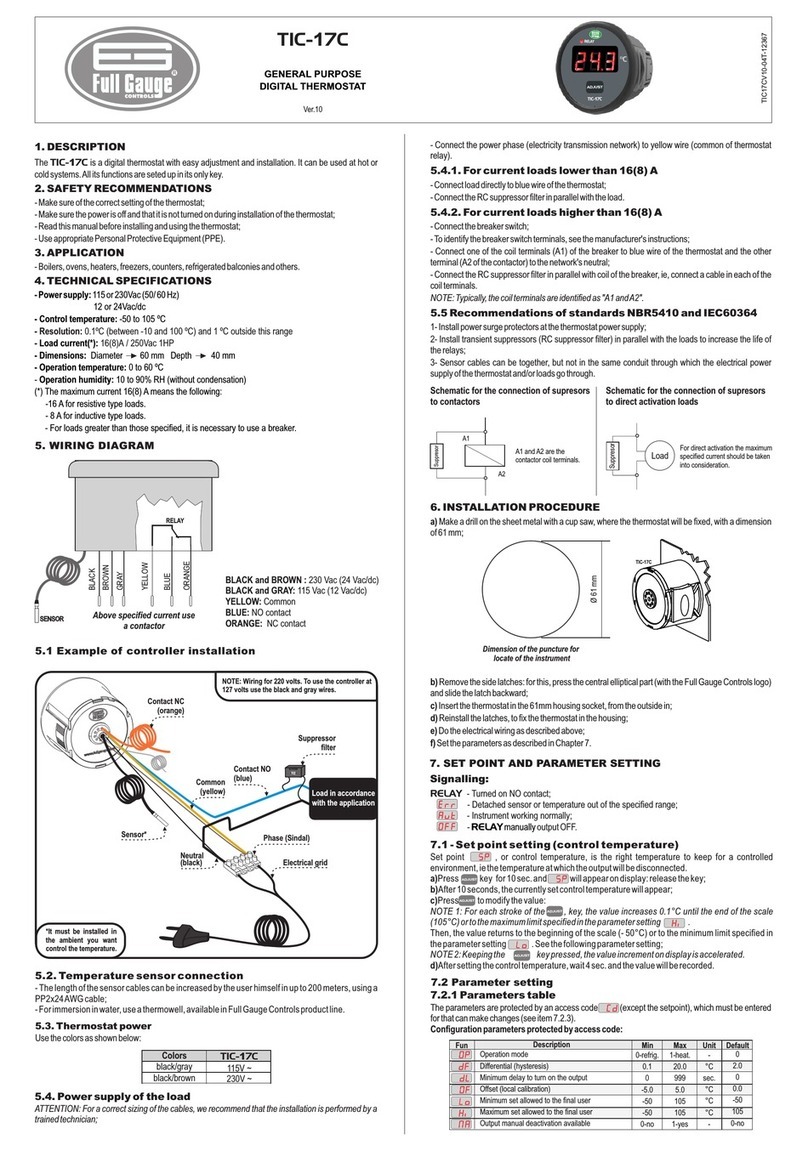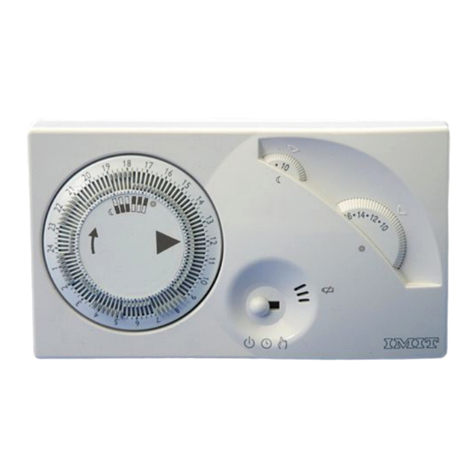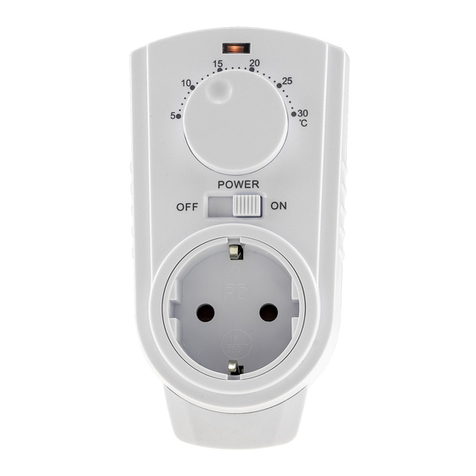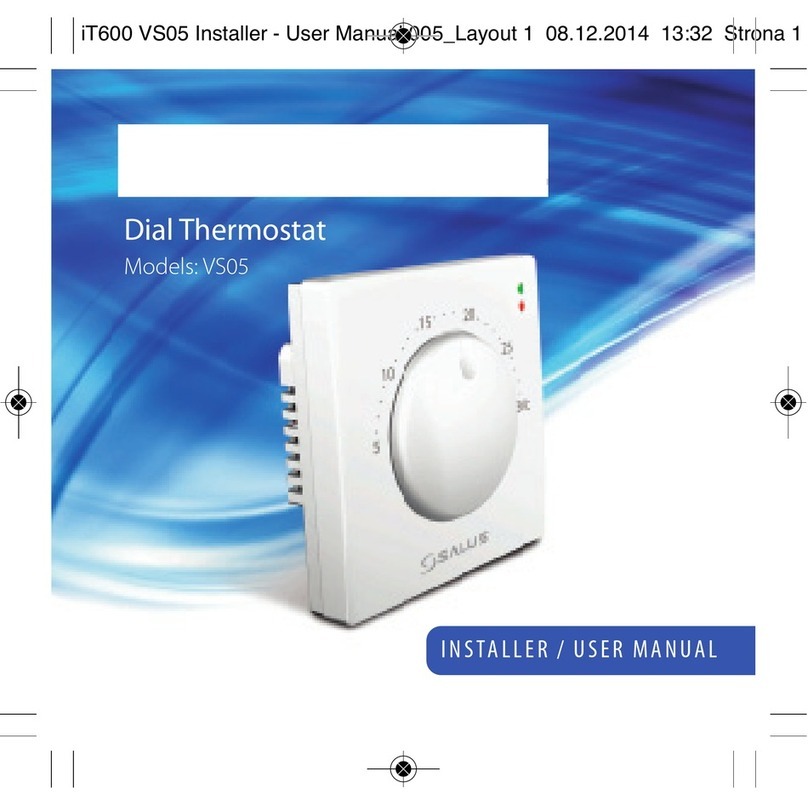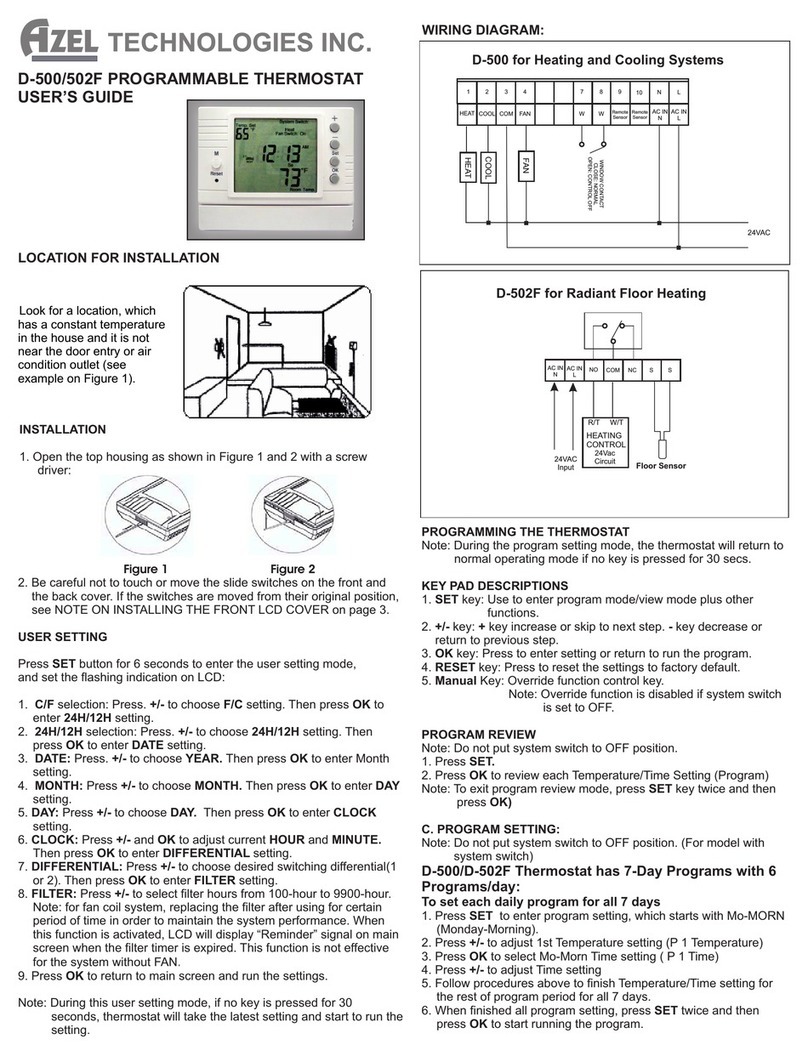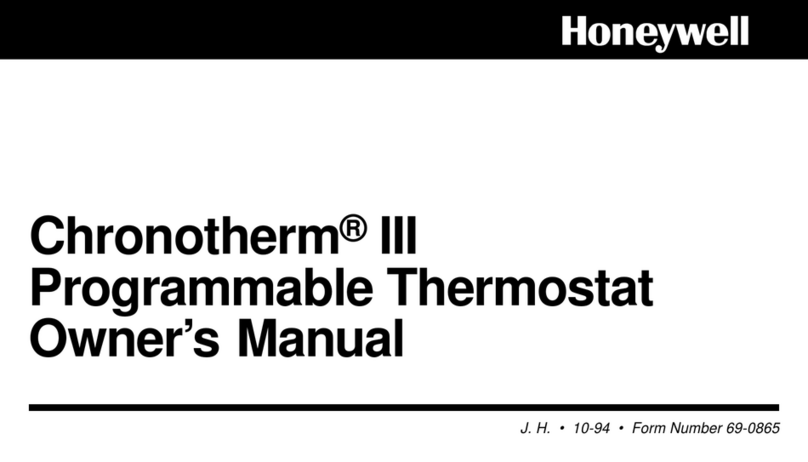
Tempo 400-114-019-A 2008-11-05 3/3
• If the TEST button illuminates, continue to step 4.
qSwitch the thermostat to Off then back to On.
• If the TEST button light goes off, the test has passed. Set the
thermostat back to the desired temperature and ignore the
remaining steps. The test is now completed.
• If the TEST button light remains on, the test has failed. Con-
tinue to step 5.
rSwitch the circuit breaker (at the service panel) of the heating
system to off then back to on.
sRepeat the test. If the test fails again, cut power to the heating
system at the main electrical panel, have an electrician verify the
installation and, if necessary, replace the thermostat.
The measured temperature is below the thermostat’s dis-
play range. Heating is activated.
The measured temperature is above the thermostat’s dis-
play range. Heating is deactivated.
Verify the thermostat and sensor connections.
7.1 Floor Limit Settings
You can set the minimum and maximum temperature that your floor
can reach. These settings are available only if the temperature
control mode setting is at AF (refer to section 3.2).
NOTE: The desired ambient temperature might not be attainable if
the maximum floor temperature is set too low.
The thermostat generally turns heating On or Off to control the ambi-
ent temperature. However, if the floor temperature drops below the
set minimum floor temperature limit or rises above the maximum
limit, the thermostat will turn heating On or Off respectively, regard-
less of the ambient temperature, to maintain the floor temperature
within the desired limits.
The minimum and maximum floor temperature
limits are factory-set at 50 °F (10 °C) and 82 °F
(28 °C) respectively. To modify the limits, pro-
ceed as follows:
nSwitch the thermostat to Off.
oWhile pressing any button, switch the thermostat back to On to
access the floor temperature limit settings.
pPress the Backlight button briefly to switch between minimum
and maximum floor temperature settings.
qPress the buttons to set the desired limit.
rPress the Backlight button for 3 seconds to save your modifica-
tions. After the data are saved, the thermostat displays the cur-
rent temperature or “– –”.
NOTE: Your modifications are automatically saved if no button is
pressed for 60 seconds.
7.2 Unoccupied Mode
The thermostat can be connected to any other remote control device
equipped with a dry contact. When the contact closes, the Unoccu-
pied Mode is activated and the Unoccupied Mode icon is dis-
played. In this mode, the thermostat lowers its setpoint by 7 °F (3.5
°C) and all temperature adjustments are blocked except for tempo-
rary bypass.
Temporary Bypass
You can temporarily bypass the Unoccupied Mode by pressing the
backlight button. During the bypass, the Unoccupied Mode icon
flashes. The bypass is automatically cancelled after 2 hours or if the
backlight button is pressed again.
Display range - F mode: 32 °F to 140 °F (0 °C to 60 °C)
- AF mode: 32 °F to 122 °F (0 °C to 50 °C)
Setpoint range - F mode: 40 °F to 104 °F (5 °C to 40 °C)
- A/AF mode: 40 °F to 86 °F (5 °C to 30 °C)
Floor limit range (AF mode): 40 °F to 104 °F (5 °C to 40 °C)
Resolution: ± 1.0 °F (0.5 °C)
Operating temperature: 32 °F to 122 °F (0 °C to 50 °C)
Storage temperature: -4 °F to 122 °F (-20 °C to 50 °C)
Control cycle: 15 minutes
GFCI rating: 5 mA
Certification: c CSA us
NUHEAT INDUSTRIES THREE (3) YEAR LIMITED WARRANTY
This product is guaranteed against workmanship defects for a three-
year period following the initial date of purchase. During this period,
NUHEAT will repair or replace, at our option and without charge, any
defective product which has been used under normal conditions.
The warranty does not cover delivery costs and does not apply to
products poorly installed or randomly damaged before, during or after
installation. This warranty cancels and replaces any other
manufacturer's express or implied warranty as well as any other
company commitment.
NUHEAT cannot be held liable for related or random damages
before, during or after the installation of this product. The defective
product as well as the purchase invoice must be returned to the place
of purchase or mailed, prepaid and insured, to the following address:
sError Messages
6.
tAdvanced Operations
7.
vTechnical Specifications
8.
Supply 120 VAC, 60 Hz 240 VAC, 60 Hz
Maximum load 15 A (1800 W) 15 A (3600 W)
;Warranty
9.
NUHEAT INDUSTRIES LTD.
USA
6920 Salashan Parkway
Building D-200
Ferndale, WA 98248
CANADA
1689 Cliveden Avenue
Delta, BC
V3M 6V5
1 (800) 778-9276
www.nuheat.com
NUHEAT®is a registered trademark of Nuheat Industries LTD.
400-114-019-A (Nuheat) ENG.fm Page 3 Wednesday, November 5, 2008 9:24 AM
